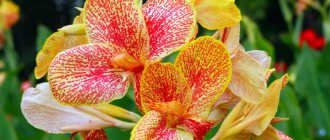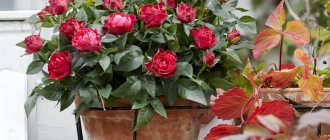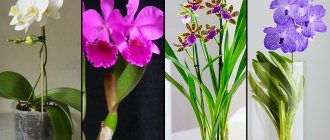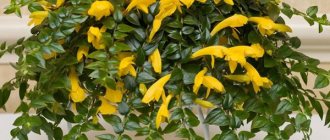Rosella, Venetian mallow, pharaoh flower, Sudanese rose are common names for Hibiscus sabdariffa, which we know as hibiscus. More recently, dried red petals of this beautiful plant began to be imported into our country, and we became acquainted with a drink that has long been known in many countries. In Egypt, hibiscus is a national drink, and is grown on an industrial scale in Sudan (the highest quality raw materials), India, Mexico, Thailand, China, Sri Lanka and the island of Java. Dried hibiscus petals, cups and rosettes are sold both by weight and packaged in colorful bags or convenient tea bags.
Sudanese rose (Rosella, Hibiscus) - what is it
But, of course, first you need to figure out what kind of plant it is. Sudanese rose, Hibiscus, Venice mallow - all this is the same flower, which belongs to the genus Hibiscus, the Malvaceae family. The so-called drink of the pharaohs is prepared from this plant, which is known among ordinary people as Hibiscus.
Sudanese rose in all its glory
Description, what it looks like, characteristics
In general, the plant is very beautiful, it is a tall herbaceous shrub - in the wild it can easily grow up to 3.5 meters. It boasts a very powerful root system, which allows it to obtain water from considerable depths, surviving even in the driest regions.
Young plants have stems that are deep green and reddish on top.
The leaf blades are jagged and slightly rough. The flowers are beautiful, bright red and quite large - up to 6 cm. They are collected in inflorescences, which makes them look even more impressive.
For reference! The Latin name of the plant is Hibiscus sabdariffa. In Russia, its botanical name is written as Hibiscus sabdariffa.
Application, medicinal properties
However, this plant is not only beautiful in appearance, but can also bring serious benefits. The composition of the drink prepared from its flowers includes:
- bioflavonoids,
- vital microelements,
- valuable fruit acids,
- vitamins B, C, R.
Tasty and healthy drink
Many experts recommend drinking this tea to artists, photographers, as well as people who work at the computer - the substance quercetin, which is part of its composition, relieves eye fatigue, and at the same time sharpens vision. And a whole complex of vitamins makes it an excellent remedy for the prevention of seasonal colds.
Interesting! Hibiscus is useful for older people, as the drink reduces cholesterol in the blood, destroys plaque in blood vessels and helps with atherosclerosis.
But there are also contraindications. For example, people suffering from diseases affecting the gastrointestinal tract are better off not drinking it - the drink can cause serious harm by increasing the level of acidity.
Where did this strange drink come from?
Rosella or Hibiscus is an annual plant of the mallow family native to India. This is a grass, very beautiful and edible. There are varieties in the form of bushes and even trees. A famous drink is prepared from the purple flower petals and their calyxes.
Hibiscus tea is a traditional drink of the Egyptians. Even the pharaohs enjoyed it! It is extremely popular in hot tropical countries for its pleasant taste and excellent ability to quench thirst. Today, Sudanese rose flowers and petals, from which tea is made, are produced in India, Sudan, Mexico, China, Thailand, Java and Sri Lanka.
How to grow Sudanese rose
Of course, people living in warm latitudes may well try growing hibiscus in open ground. If frost is possible in winter, you should think about a reliable shelter - for example, a prefabricated greenhouse.
Ground cover roses - what are they, varieties
The first flowers will appear on the plant at about the age of 5 years when propagated by seeds and 3-4 years when using cuttings. Therefore, there is no need to expect quick results when growing Sudanese roses.
Well, the rest have no choice but to grow an unusual flower right at home, for example, on a windowsill.
Propagation by cuttings and seeds
Of course, purchasing Sudanese rose seed is much easier - you can easily order it online. In addition, an important feature is good germination - even after 3-5 years, almost all seeds hatch.
Landing does not cause serious problems:
- The planting material is disinfected - it can be kept for about an hour in a warm solution of potassium permanganate.
- The seeds are soaked in a suitable growth stimulant - the easiest way is to keep them in cotton cloth soaked in Kornevin solution until the first shoots appear.
- The germinated seeds are planted in separate pots and after 20-30 days the first shoots will appear above the surface.
Propagation by cuttings allows you to save a lot of time - at least 1-2 years. But they are also much more difficult to obtain than seeds. The problem is complicated by the fact that only young shoots, annual ones, can be used. It is best to plant them in late spring - early summer. The optimal length of cuttings is 10-15 cm.
For reference! Wood ash can be a good feed for Sudanese roses.
A day before planting, the cuttings are dipped in a root growth stimulator solution and then planted in a pot with a suitable soil mixture. To create a greenhouse effect, the pot is placed in a plastic bag or the cutting is covered with a cut plastic bottle.
Benefits of tea
A malignant tumor, or in other words cancer, has become a very common disease of our time. It is the most terrible disease today. Hibiscus flowers contain antioxidants that can remove free radicals from the human body.
Healing properties of tea:
- Tea, brewed according to the rules, can relieve heartburn;
- Frequent consumption of tea can solve such a delicate problem as constipation or atony of the large intestine;
- This drink is good for people who have a weakened immune system; it is a strengthening drink due to the large amount of vitamins and microelements it contains;
- If a person has high cholesterol, then drinking this tea reduces it;
- For those people who have a disease such as diabetes, this drink helps alleviate its course;
- Skin diseases such as psoriasis and eczema can disappear after a course of lotions from this flower;
- If you have swelling, then you should drink this tea. It will provide a diuretic effect;
- This drink strengthens capillaries well. It helps those who have cardiovascular disease;
- When you have a cold, this drink is good to use to reduce your temperature.
How to plant at home
However, it is not enough to know how to propagate Sudanese rose. It is equally important to have an idea of the optimal conditions of detention. Still, this plant is quite whimsical, and even minor mistakes may well lead to it withering and dying. Therefore, there are simply no trifles here - you need to understand everything thoroughly.
Soil for planting
White bloom on roses - what is it and how to treat it
Of course, first of all, when you decide to plant a Sudanese rose at home, you need to choose the right soil. Regular soil from the store will not work - you will have to make the substrate yourself. On the one hand, it should be light, and on the other, nutritious. The plant also reacts positively to acidic soil.
It is best to mix in equal proportions:
- sand,
- leaf soil,
- peat,
- humus.
On such soil, the Sudanese rose will grow and develop as quickly as possible.
Necessary conditions for cultivation
In order for the plant to feel comfortable and grow quickly, you need to create optimal conditions. One of the most important is the correct temperature. Sudanese rose feels best at +15..+18 degrees in winter and at +20..+25 degrees in summer.
In addition, she loves high humidity. If the apartment is too dry, the leaves will begin to dry - from the tips, and then further. Avoiding this is quite simple - spray the plant with a spray bottle once or twice a day.
Attention! In summer you need to water more abundantly, but in winter, when the Sudanese rose hardly grows, it is enough to lightly moisten the soil once or twice a week so that it does not dry out.
Growing problems
Sudanese rose is quite unpretentious. The main thing it needs when growing on a windowsill is regular watering and air humidity .
If the soil in the flowerpot dries out, the plant will immediately drop its buds. To prevent this from happening, you need to check the soil moisture with a toothpick.
Daily spraying or an indoor fountain will help cope with dry air.
To grow a flower in an apartment, regular watering and air humidity are required.
Protection from diseases and pests
Any plant can suffer from various pests and diseases. Hibiscus is no exception. Therefore, you need to prepare for such a turn in advance.
Harvest from the bush
Of the pests, the most problematic are the common aphid, as well as the spider mite. However, they do not like humidity and usually do not appear with regular spraying. If insects do appear, then you can use any medicinal product - most often, two or three treatments are enough to solve the problem.
The most dangerous diseases are bacterial cancer and anthracnose. A very effective remedy for the latter is a 1% solution of Bordeaux mixture. Bacterial cancer is much more dangerous - the plant will have to be destroyed so that the disease does not spread to others.
The Sudanese rose is not on the list of the most whimsical, although it requires certain conditions of maintenance. Any beginning flower lover will be able to grow hibiscus if he sets such a goal and studies the theory.
Harm
The benefits of drinking hibiscus tea are much greater than the harm. But, like any other drink, it has its own characteristics. Consuming in excessive quantities can lead to side effects, so you need to drink it in reasonable doses, and in some cases you should completely abandon it. The drink can be harmful to health under the following conditions:
- For stomach problems: high acidity, gastritis, ulcers. The drink contains a large amount of natural acids, it negatively affects the damaged walls and mucous membrane of the stomach, increases its acidity, provokes heartburn, and can cause a relapse of a chronic disease.
- If you have stones in the kidneys or bladder: tea has a diuretic effect, its excessive consumption can cause unwanted, and at the same time very painful, movement of stones.
- For individual intolerance and tendency to allergies.
- It is not recommended to give tea to children prone to diathesis.
- For low blood pressure (hypotension): eating hibiscus in large quantities tends to lower blood pressure.
- The drink contains a lot of acid; if consumed excessively, it can damage tooth enamel. It is best to drink this tea through a straw or rinse your mouth with water after each use.
- During pregnancy and breastfeeding: hibiscus affects hormonal levels, which is very undesirable during pregnancy, and also normalizes the menstrual cycle, which can cause miscarriage. It is also better to avoid such tea during breastfeeding; it can cause allergies in the baby, colic and sleep disturbances.
- With hormone replacement therapy (especially in women): hibiscus affects the production of estrogens.
- When using certain medications, for example, to lower blood pressure, antitumor drugs, antipyretics (paracetamol). Tea can enhance their effect, which will lead to side effects.
Photos of culture
Here you can see a photo of a Sudanese rose.
Sources
- https://FlowerProfi.ru/ulichnye-rasteniya/sudanskaya-roza-v-domashnih-usloviyah.html
- https://saddomashniy.ru/gibiskus-sabdariffa.html
- https://SadDrakona.ru/sad/gibiskus-i-karkade-v-chem-raznica.html
- https://ria.ru/20210923/karkade-1751525665.html
- https://floriums.ru/gibiskus-i-karkade-v-chem-raznitsa
- https://prochayok.ru/karkade/iz-chego-delayut-chaj.html
- https://edaplus.info/produce/hibiscus.html
- https://FB.ru/article/58506/karkade-sudanskaya-roza-rozella-gibiskus—raznyie-nazvaniya-poleznogo-rasteniya
- https://www.oum.ru/yoga/pravilnoe-pitanie/karkade-polza-i-vred/
- https://psydesign.net/gibiskus-sudanskij-alyj-koktejl-vyrashhivanie-iz/
- https://shakeparty.ru/raznoe/gibiskus-sudanskij-alyj-koktejl-vyracshivanie-iz-semyan.html
- https://sanlit.su/rozy/sudanskaya-roza-karkade-vyrashhivanie.html
- https://pocvetam.ru/sadovye-tsvety/rozy/sudanskaya.html
- https://SadDrakona.ru/sad/karkade-vyrashchivanie-iz-semyan.html
- https://botanchik.ru/sudanskaya-roza/vyraschivanie-sudanskoy-rozy-doma
- https://101-rose.ru/grunt/vyraschivanie-sudanskoy-rozy-doma.html
Comments (4)
Anya
01/12/2019 at 06:53 |
No, hibiscus is definitely not suitable for me, this plant needs moisture in addition to a sunny, bright place, but I have problems with humid air in my apartment, even spraying will not help.Answer
Andrey Expert Fruit Garden
01/14/2019 at 19:31 |
Good afternoon, Anna! Currently, there is no need for frequent spraying of indoor plants. You just need to purchase an ultrasonic waterfall fountain and place it in close proximity to the plants. Thanks to ultrasonic water spraying, the air will be saturated with the moisture necessary for the plant, and you will only need to monitor the water level in the container!
PS If ultrasonic air humidifiers are not sold in your city, they can be purchased on AliExpress, at a price of 3 to 8 USD for 1 fog generator. IMPORTANT! Since the water evaporated by the generator forms a kind of “creeping” fog, it is advisable to place the humidifier on a hill (for uniform access of moisture to ALL plants!))
Answer
Anisiya
04.09.2019 at 19:35 |
Hibiscus once grew on my windowsill. Not southern, but judging by the way the tree grew, the conditions were good. But it never bloomed. Although, if flowers appeared, I would hardly use them for tea. What if it's not the same variety?
Answer
Yulia Expert Plodogorod
09/07/2019 at 16:34 |
Hello Anisia! Any hibiscus cultivated as a houseplant is not suitable for adding to tea. Hibiscus drink is prepared from a certain variety of hibiscus, and it is not often grown at home.
The fact is that this plant is very light-loving. Even in the garden, you need to choose the site very carefully, and if it grows on a windowsill, the bush will be stunted and most likely will not bloom. In addition, hibiscus hibiscus has a large rhizome, the growth of which in a pot is inhibited. Some success can be achieved by constantly replanting the flower in a larger container.
The species described is sometimes called roselle. It looks like a herbaceous shrub that reaches two meters in height and 1-1.5 m in width. It is worth noting that this is an annual. In gardens and on window sills, the Hibiscus rosa-sinensis variety is much more popular. This plant can be a small tree or a large shrub, depending on what shape the gardener creates.
Your plant may not be blooming because it doesn't have enough light. Hibiscus will benefit from plenty of light, but without direct sunlight. You can take the plant out into the air during the warm season.
Lack of watering during the period of active growth can cause the buds to fall off, or their complete absence. But, when moistening, you need to observe moderation, water only when the top layers of the soil have dried. Otherwise, you can provoke rotting of the roots.
Another nuance is that the formation of flower buds in this plant occurs at a temperature of 14-16 degrees. It is important to give the plant a full period of rest, then flowering will be abundant. But, when the plant is already gaining buds, lowering the temperature is unacceptable.
If your flower has grown quite large and has luxurious greenery, the plant may have been overfed with nitrogen. This is a general rule for all crops; if there is an excess of this substance, they will not bloom. It is important to fertilize correctly. You can use complex mineral products, in which phosphorus and potassium predominate.
Additionally, you can water the plant with a solution of boric acid. This will increase the number of buds and in addition protect your pet from fungus.
Answer
Value for cosmetology
Egyptian legend says that the Saudi rose was called the “flower of the pharaohs.” Cleopatra not only drank hibiscus in the form of tea, but also took baths with a tincture of the plant. Therefore, her skin was copper-colored, which was impossible to obtain in any other way.
Modern girls use roses in the following cases:
- For skin problems. Soaked petals should be used in masks.
- Rose helps get rid of bags under the eyes.
- Porridge of petals removes excess oil from hair.
Peculiarities
The main thing when growing hibiscus is to choose a suitable container and place where it will grow. It is better to avoid direct sunlight when placing it.
Caring for this plant is easy; it is also important not to let the soil dry out, because it is an inhabitant of humid African tropical forests.
Hibiscus usually blooms in early spring and blooms for quite a long time. The developed plant does not lose its attractiveness even in winter, resembling a small evergreen tree.
Propagating the flower is quite simple. You can do this using cuttings - cut branches. Dividing the bush gives a good result, so from one overgrown hibiscus you can get several already sufficiently developed specimens at once. But hibiscus is also famous for another feature - its ability to produce numerous viable seeds even when grown indoors, which is not at all typical for tropical plants that find themselves in such conditions.











